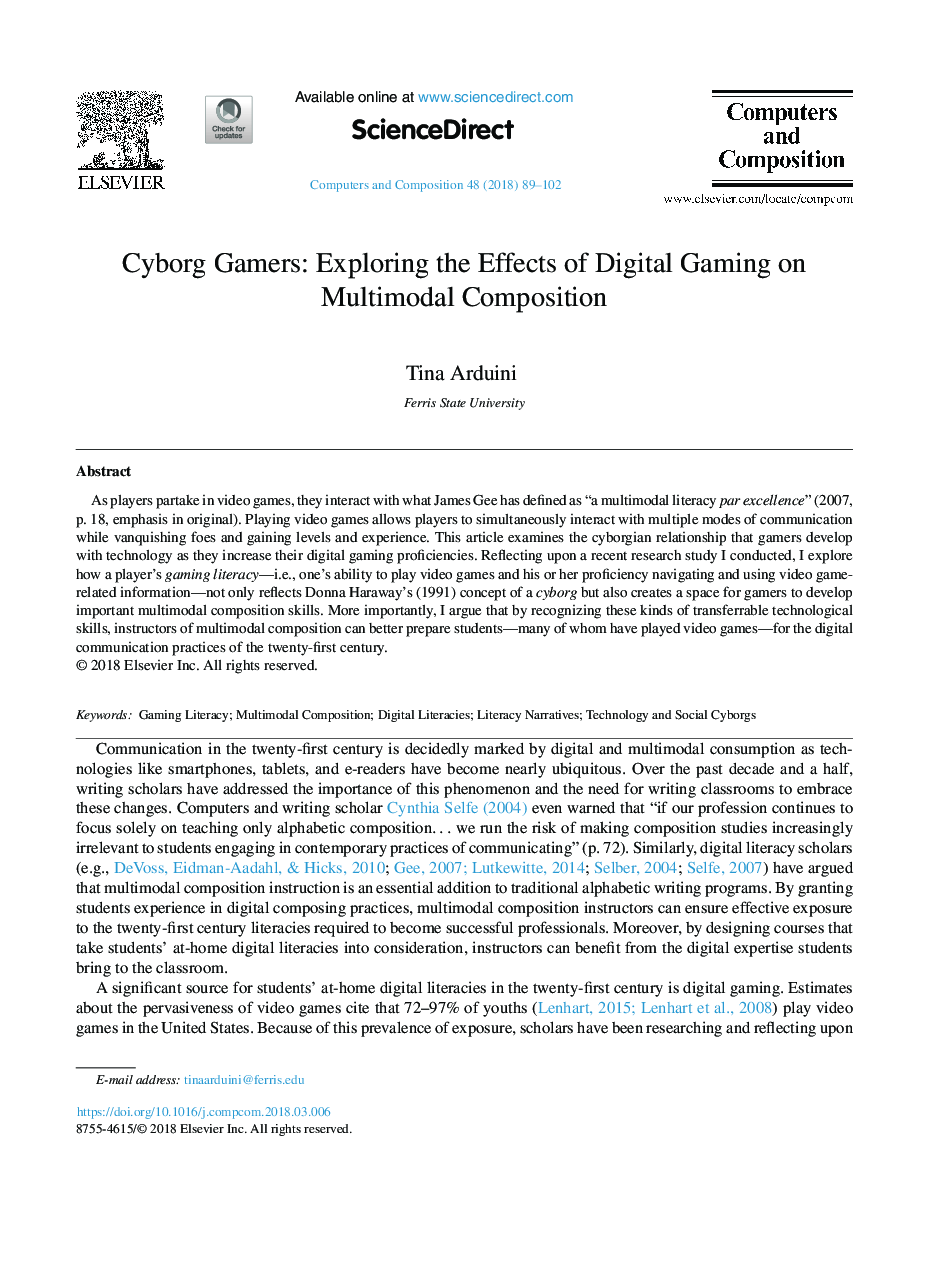| Article ID | Journal | Published Year | Pages | File Type |
|---|---|---|---|---|
| 6834444 | Computers and Composition | 2018 | 14 Pages |
Abstract
As players partake in video games, they interact with what James Gee has defined as “a multimodal literacy par excellence” (2007, p. 18, emphasis in original). Playing video games allows players to simultaneously interact with multiple modes of communication while vanquishing foes and gaining levels and experience. This article examines the cyborgian relationship that gamers develop with technology as they increase their digital gaming proficiencies. Reflecting upon a recent research study I conducted, I explore how a player's gaming literacy-i.e., one's ability to play video games and his or her proficiency navigating and using video game-related information-not only reflects Donna Haraway's (1991) concept of a cyborg but also creates a space for gamers to develop important multimodal composition skills. More importantly, I argue that by recognizing these kinds of transferrable technological skills, instructors of multimodal composition can better prepare students-many of whom have played video games-for the digital communication practices of the twenty-first century.
Related Topics
Social Sciences and Humanities
Arts and Humanities
Language and Linguistics
Authors
Tina Arduini,
